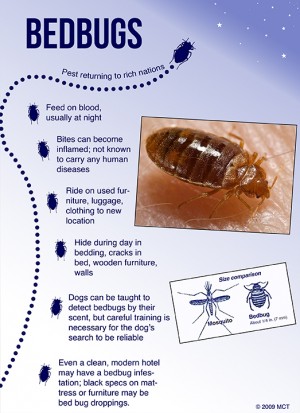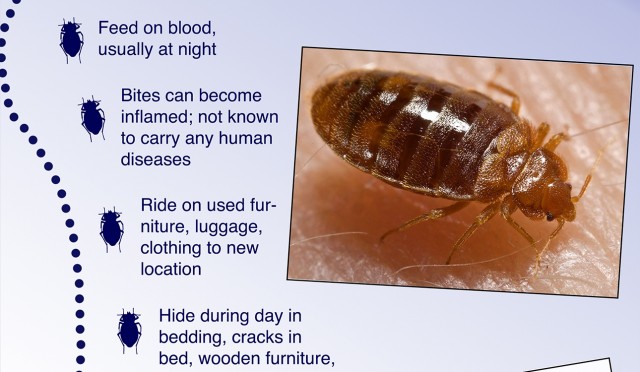 By Amanda Tolentino
By Amanda Tolentino
Contributor
The bedtime saying “Don’t let the bedbugs bite” is more than a child’s tale. These creepy-crawlies are bed hogs too stubborn to leave without a fight or bite.
College campuses can be hosts to bedbugs, especially when students travel internationally, said Don Bagby, director of facilities management.
Bedbugs are parasitic nocturnal insects found in and around sleeping areas. Although bedbugs do not carry or spread diseases, they do feed on human blood, Bagby said.
Outbreaks are common in areas where turnover of occupants is constant, such as hotels, apartments and dorms.
Bedbug bites tend to be located on the upper body and cause itching and swelling. Adult bedbugs average from 1/4 to 3/8 inch long.
The average lifespan of bedbugs is one year, but they can live up to 10 months without feeding. A single bedbug can lay up to 500 eggs in its lifetime.
“Its rapid reproduction is why you shouldn’t let them get out of hand,” Bagby said. “It’s always a good idea to wash bedding, especially when you bring it from another location, in order minimize your risk of bedbugs.”
The National Pest Management Association conducted a survey tracking the number of bedbug cases pest control companies had from 2010 to 2011. The results of the survey showed that treatment in universities increased from 35 percent to 54 percent during that time frame.
As of November 2012, director of emergency management Leigh Ann Moffett said there had only been two cases of bedbugs on campus within the past three years. Subsequently, two Baylor students were removed from their dorm at South Russell Residence Hall on Tuesday due to a bedbug infestation.
“We have had about 50 requests to check for bedbugs, but the majority of them turned out to be rashes or other insects,” Bagby said.
When requests are sent to check for bedbugs, the university contacts Ecolab, Baylor’s pest control service provider.
Bagby said the university follows Ecolab’s protocol. An Ecolab technician and a Community Living & Learning residence hall director conduct a step-by-step inspection of the suspected room and the adjacent rooms.
Bedbugs often leave tiny dark stains on bed sheets, pillowcases or mattresses.
If bedbugs are present, Ecolab will perform multiple treatments and dispose of mattresses. Other soft items, such as couches and chairs, will be professionally laundered.
Ecolab will then perform a 24-hour follow-up and a two-week follow-up after the first treatment.
“We started out by asking Ecolab to provide us with an outline on what plan would be the best heavily weighted course of action,” Bagby said. “It has to be carefully carried out, especially when determining where the resident should go during the treatment period.”
The majority of bedbugs were eradicated in the United States after World War II, but there has been a resurgence within the past decade.
“Bedbugs have developed an immunity to pesticides in the past, Bagby said. “They are good little hitchhikers, especially during international travel.”



